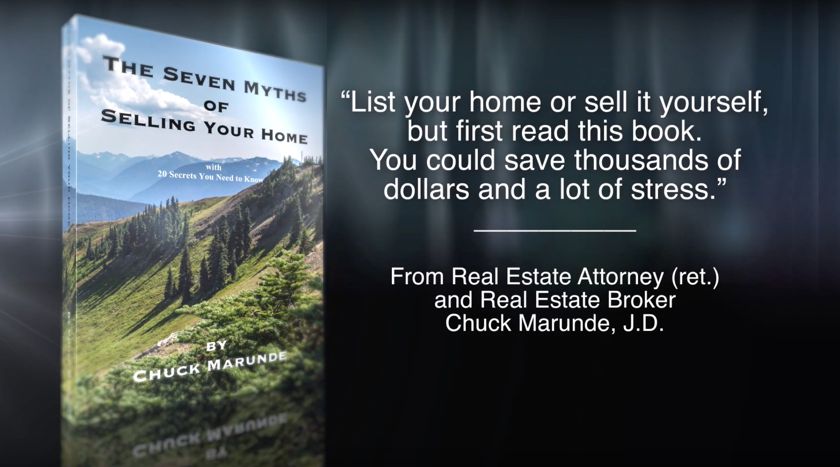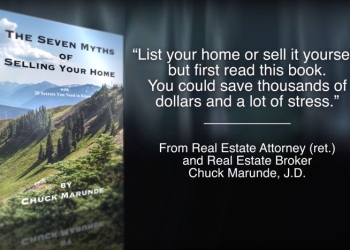Introduction to 5 Installments: Selling your home is no small matter, and since I’ve been in the real estate business going back four decades and transitioned from traditional marketing to powerful Internet marketing technologies, I’ve seen a lot of changes. While consumers are quite aware of the changes in how they search for homes and do online research, and how they do not respond to old print advertising and other worn out sales gimmicks, the real estate industry itself has lagged far behind. I’ve watched too many good people get caught up in the nonsense of agents’ gimmicks and listing presentations. Having written many books for buyers, I finally could not contain myself any longer, and I decided to share what I’ve learned that home owners definitely would want to know if only someone would tell them. This is the second of five installments of my book, The Seven Myths of Selling Your Home.
It doesn’t seem that long ago when we were still dialing numbers on a rotary phone. Remember that? And it wasn’t very long ago when fax machines first became popular, and then cell phones, and computers, and the Internet. When I was in law school at Gonzaga University in the early 1980s, John Stockton was playing college ball in the campus gym, and no one had ever heard of Bill Gates. In 1985 Larry Page, co-founder of Google, was 12 years old, Steve Chen, co-founder of Youtube, was 7 years old, and Mark Zuckerberg of Facebook was only one. Now they are all billionaires.
Google is old among technology companies today, and even Google was only founded in 1998. Now people all over the world are using the Internet and smartphone apps as though they’ve been around forever. We have online services of every kind and software in the clouds. We have social media used by billions of people, and we can communicate instantly with friends all over the world. For the first time in the history of mankind, time and distance have been rendered irrelevant. We have seen advances in the past 10 years that most of us would never have anticipated. As the saying goes, “The only constant is change itself.” But what we’ve been witnessing is not only change as a constant, but the acceleration of change.
The real estate industry has been right in the middle of these extraordinary developments. This book focuses on a very narrow aspect of all these changes—selling your home today. I will drill down to the most relevant changes that affect you as a home seller. Because many of these changes have snuck up on us, most people are still thinking like they did 20 years ago with respect to advertising and selling a home. But the world has changed. Buyers have changed. It’s time for home sellers to catch up to The New World of Marketing.
That’s what this book is all about. Much of what has been said about how to sell a home today is clothed in myths. Sometimes I hear home sellers repeat these myths, and I wince politely. The challenge is that myths are hard to recognize. Selling a home is not a process you can put in a laboratory to define the exact formula for success. It is possible to do everything wrong and still sell your home, if you get lucky. But selling your home should not be about luck. It should be about implementing the most effective strategies to reach the most qualified buyers. Even if you do everything right, there is no guarantee you will sell your home quickly for the price you want.
It’s interesting how myths get started. Rumors that are repeated enough often become “facts,” and information passed on from person to person can get lost in the translation. To make matters more interesting, even with honest and intelligent people, things can get a bit complicated, because what you knew to be true about selling real estate in the last decade is almost certainly not true in this decade. So even if you used to be right, you may be wrong now. The Merriam Webster Dictionary defines a myth as, “an idea or story that is believed by many people but that is not true.” We all know myths abound in science, history, and religion, but I can tell you that myths abound in real estate, too, especially for home sellers today. And these myths trap home sellers into making bad decisions.
If you, as a home seller, are going to make wise decisions, they must be fully informed decisions, and that means getting past myths to get the whole truth. Making important decisions with partial truths can have devastating outcomes.
This is Part 2 of 5 installments. For more information about my book, which you can get in either the Kindle version or the paperback version, you can preview it on Amazon at The Seven Myths of Selling Your Home.
Read the next installment, Part 3 of How to Sell Your Home.
Last Updated on January 6, 2021 by Chuck Marunde





























